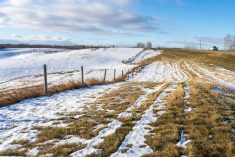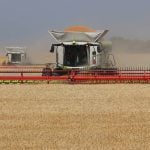At 98 per cent complete, spring planting in Saskatchewan has essentially wrapped up for 2024, although for rain has delayed farmers’ last rounds in the northeast and east-central regions of the province.
For the week ended June 10, it was the northeast that received the most precipitation in Saskatchewan. The province’s latest crop report noted there was some crop flooding in low-lying areas.
Seeding operations in the southeast, southwest and west-central regions were listed as 99 per finished, while the northwest was 98 per cent. The east-central was pegged at 97 per cent done and the northeast made to 95 per cent.
Read Also

Ukraine’s farms once fed billions but now its soil is starving
Ukraine’s soil may no longer be able to sustain the country’s role as one of the major food producers without urgent action. And this could have consequences that stretch far beyond its borders.
The report said cropland topsoil moisture rated eight per cent surplus, 90 per cent adequate, and two per cent short. Hayland topsoil moisture levels were five per cent surplus, 89 per cent adequate and six per cent short. That for pastures came in at five per cent surplus, 87 per cent adequate and eight per cent short.
Of the province’s winter cereals, the fall rye and winter wheat were said to be 87 per cent good to excellent. Durum led the spring cereals at also 93 per cent good to excellent, with the spring wheat, barley, and oats at 87 per cent.
Flax topped the oilseeds at 91 per cent good to excellent, mustard at 88 per cent and canola at 78 per cent.
The pulses were led by the chickpeas at 95 per cent good to excellent, with the field peas at 91 per cent and the lentils at 90 per cent.
Among the specialty crops Saskatchewan’s canary seed was 89 per cent good to excellent and triticale ranked 86 per cent.
The ag department reported crop damage was caused by excessive moisture, frost, wind, as well as flea beetles, grasshoppers and gophers.
















